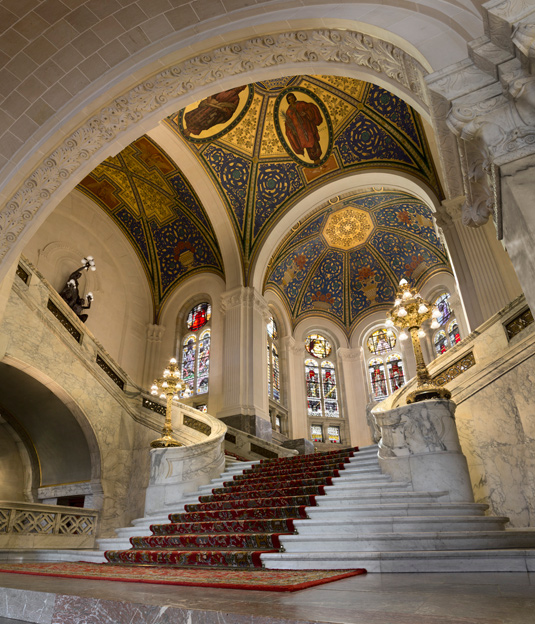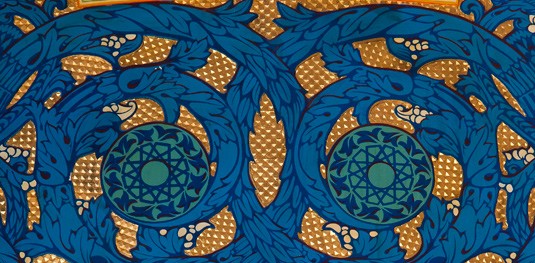While Herman Rosse didn’t have any public projects to his name yet, he was considered a promising designer and was chosen to design much of the interior of the Peace Palace, especifically the ceilings, the windows and the tiling. Deeply rooted in the English preference for pure art and floral motifs, his artistic style also incorporated colourful nature-based patterns which hinted − thanks to his geometric approach and compositions − towards the coming age of modernism.
Modernism meets traditional art
His style was a combination of classical art motifs whilst embracing the clean lines of modernism. In every room, Herman’s artwork will be visible somewhere. His most notable work is that of the ceiling of the central hall of the Peace Palace, which features the goddesses of Peace, Law, Order and Justice.

From the Peace Palace to Hollywood
Herman’s Oscar was for Art Direction in the film The King of Jazz (1930). He designed costumes and sets for the film and was very inventive with his use of colour, especially for the musical number Rhapsody in Blue because at that time the colour blue could not be picked up by the cameras. For someone with a seemingly classical art background, this move into films may seem an odd step but Herman’s travels and studies not only made him a professional designer, but also awakened his love for theatre. The Peace Palace was, in some ways, the first major set which Herman designed; the Peace Palace was on the world’s stage with the attention of the public firmly fixed upon it because it was the foremost symbol of the new peace movement. It was new, exciting and much was expected of it. Therefore, Herman’s segue into Hollywood doesn’t seem so strange after all.

Uncovering the Past
The stories behind the interior designs and designers have never before been explored in great detail. However, they contributed to making the Peace Palace not only a unique building and a product of an era, but also a visible icon of peace and justice.
The fascinating career of Herman Rosse makes us especially curious. Until recently, preliminary sketches of his designs were nowhere to be found in our archives and most of his legacy remains in his finished products. He left no paper-trail of designs by which we can follow his career, which makes telling his story rather challenging. Thanks to conversations with his remaining family we have slowly pieced together his extraordinary life and his grandson Mark, kindly donated a sketch of the tile work in the rear corridors. This can be seen during guided tours.
Would you like to learn more about the interior design of the Peace Palace? A special magazine about Herman Rosse and his decorations is available in our webshop and our Visitors Centre.